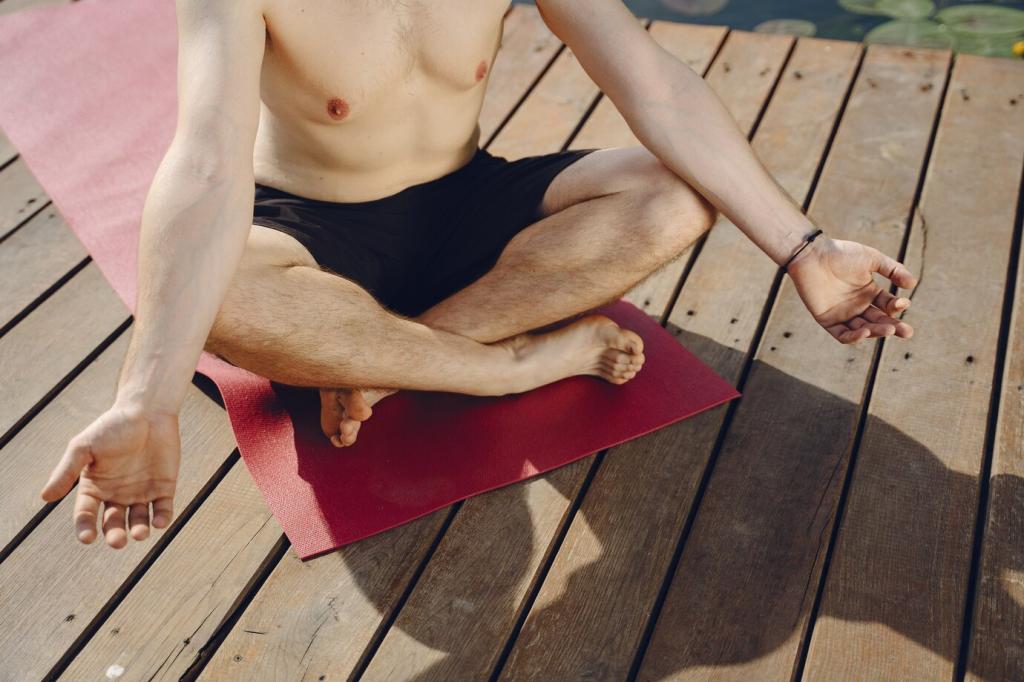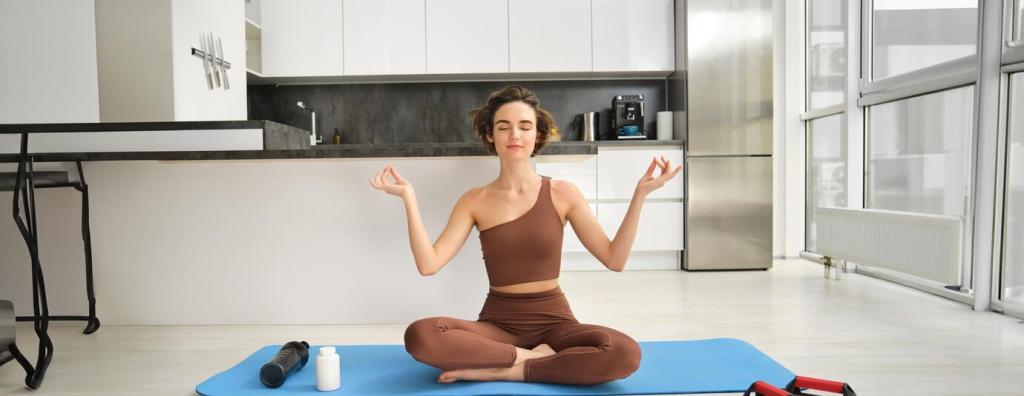Welcome to a mindful approach to training where strength, cardio, and recovery flow with focused breathing, presence, and reflection. Explore how small, consistent meditation practices make your fitness plan more sustainable, joyful, and effective.
Begin With Intention: Align Your Training and Mind
Set a Pre-Workout Intention
Before moving, define one clear intention, like moving with patience or honoring form. This signals your nervous system to focus, prevents rushing, and keeps your training aligned with values, not just numbers.
Use Breath As Your Warm-Up
Spend two minutes on slow nasal breathing, four seconds in and six seconds out. Your heart rate softens, shoulders drop, and your brain shifts into a calmer state that supports smoother, safer movement.
Balance Your Week With Purpose
Pair strength, cardio, and mobility days with matched meditation styles. Use focus meditations on heavy days, rhythmic breath on intervals, and body scans after mobility. Intention keeps variety purposeful and sustainable.


A Mindful Weekly Template You Can Adapt
Lift for forty minutes, emphasizing compound movements. Before your first set, do a three-minute box-breathing practice. Between sets, take two slow breaths to reset posture and reduce tension in your jaw and shoulders.
A Mindful Weekly Template You Can Adapt
Choose a moderate run, cycle, or brisk walk for thirty minutes. Match footfalls or pedal strokes to steady inhales and long exhales. Let wandering thoughts pass, gently returning attention to rhythm and environment.
What Science Suggests About Meditation and Training
Light daily meditation can help regulate stress responses, which may stabilize mood and motivation. Lower stress often means fewer skipped sessions and less all-or-nothing thinking, helping your routine evolve with real life.
Mindful Pacing: Listening Beats Forcing
Pause between blocks to scan jaw, neck, back, and breath. Release unnecessary tension before continuing. This micro-reset often restores coordination and prevents the final sets from devolving into sloppy, rushed movements.
Mindful Pacing: Listening Beats Forcing
Match work and rest intervals to breath counts, not just seconds. For example, eight strong exhales during work, twelve smooth exhales during rest. Breathing shapes intensity and teaches intuitive regulation you can trust.





Tools and Rituals To Make Balance Automatic
Anchor Meditation to Existing Habits
Pair two minutes of breathing with shoes on, timer start, or water bottle fill. Habit stacking removes decision fatigue and transforms mindfulness from a grand plan into a tiny, repeatable cue.


Create a Sensory Start Line
Use the same mat corner, a minimal playlist, or a calming scent to mark session boundaries. Predictable sensory cues train your brain to arrive quicker, reducing warm-up fidgeting and pre-workout procrastination.
